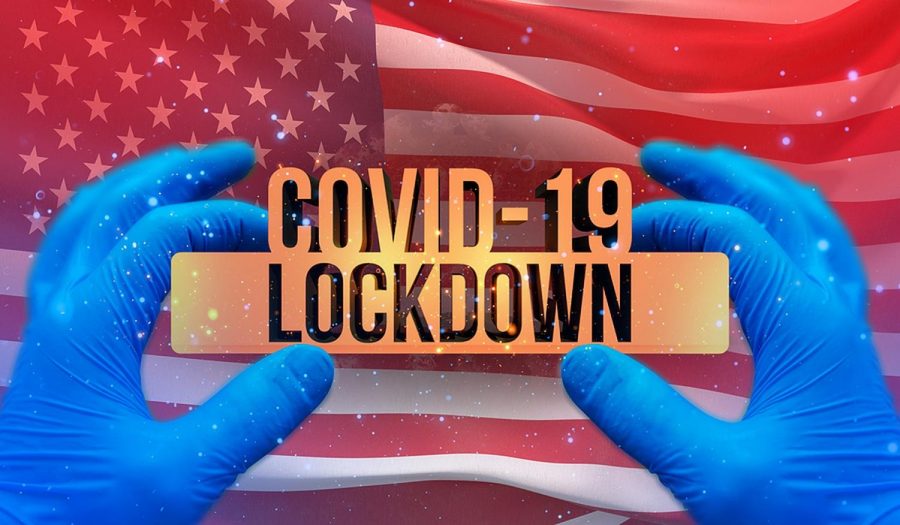Op-Ed: Political Leadership Suffers During COVID-19
April 20, 2020
With the threat of the COVID-19 virus intensifying each day, it’s imperative that Americans have their local and federal governments to look for guidance. Unfortunately, this is not possible due to the slow response by government officials.
A prime example of a politician downplaying the virus’s threat is President Donald Trump.
Over the past three months, Trump’s tone on the issue has changed dramatically. From the beginning, Trump has discredited advice from public health organizations like the Centers for Disease Control and Prevention (CDC) and the World Health Organization (WHO). As the nation’s chief sources for public health information, these organizations have the vital task of informing our country about the next steps to take to keep the country safe.
Yet, Trump has decided to ignore their warnings and has even gone as far as to cut the U.S.’s funding of the WHO.
When the epidemic first ignited in China, Trump was quick to coin the term “Chinese Virus,” an inappropriate term for the illness that the WHO had specifically advised against using. According to a 2015 release from the WHO, naming a virus after its geographic origin can create an opportunity to marginalize minorities from that area, and this has been seen in a multitude of xenophobic and racist incidents across the globe. Still, Trump uses the harmful epithet.
When it comes to the U.S.’s response to the pandemic, little has been more convoluted during this time of crisis. Trump’s administration was already off to a poor start with the issue, lacking the National Security Council’s pandemic response team that he eliminated in 2018.
However, the administration has a helpful resource in Dr. Anthony Fauci, a renowned immunologist and the director of the National Institute of Allergy and Infectious Diseases (NIAID).
Dr. Fauci—who has served the NIAID since the AIDS crisis peaked in 1984—has been working closely with the administration to echo the words of the WHO and the CDC. In his daily press conferences, Trump has blatantly ignored much of the advice he’s been given.
Despite public health officials’ urges for citizens to stay inside for the coming weeks, Trump had previously expressed his hopes to “reopen the economy” by Easter and ease social distancing measures even earlier.
This rush to return to “normal” is not feasible and doesn’t make sense considering the current state of the world we live in—and will continue to experience in May and June. Most U.S. hospitals are just beginning to see surges in hospitalized patients and bringing millions out of social isolation would disastrously escalate the course of the virus, especially with testing numbers far from where they should be.
Furthermore, this executive decision would go against the word of most governors, who ultimately have control over their own stay-at-home orders and business closures. Trump doesn’t seem to see this— even inaccurately claiming that his “authority is total”—but his Opening Our Country Council continues to meet on this issue in spite of the fact that it isn’t ultimately his call.
Although the stock market crashed in March, maintaining social distancing measures is more important than improving the state of the economy by reopening businesses. What the administration should instead focus on, in addition to supporting hospitals and healthcare workers, is the economic relief that these businesses require to stay on their feet without income.
However, media outlets still can’t seem to make up their mind about the severity of the threat the virus poses.
In a Washington Post compilation video, side-by-side coverage of just days apart shows how reporting by Fox News anchors has changed rapidly, despite the CDC and the WHO’s consistent remarks.
Media misrepresentation by other news outlets is also seen in a White House video retweeted by Trump himself, where a timeline of the administration’s response to COVID-19 is presented. However, it calls his actions “decisive,” when constant redirection and mixed messages have shown hesitation.
— Donald J. Trump (@realDonaldTrump) April 14, 2020
On March 11, Trump announced travel restrictions between the U.S. and Europe, with the exception of the United Kingdom. All this did was create a petri dish of sorts—the virus had already been spreading at a community level for weeks. While these restrictions were necessary and much welcomed, the CDC had already been advising against travel to Level 2 and Level 3 countries for weeks, and the window of time for these measures to be effective had long passed.
The efficacy of these actions aside, they only reshaped international travel in the U.S. and did nothing to prevent domestic spread of the virus.
Another major closure in the United States wasn’t enacted by the government—it was from the National Basketball Association. The NBA suspended the remainder of their season on March 11 (the same day WHO declared the virus a pandemic and travel restrictions were announced). The fact that a sports organization was faster to respond than political leaders speaks to the delayed response to the crisis.
Trump declared a state of national emergency on March 13, solidifying the severity of the threat. Since then, no major actions have been taken on a national level.























































